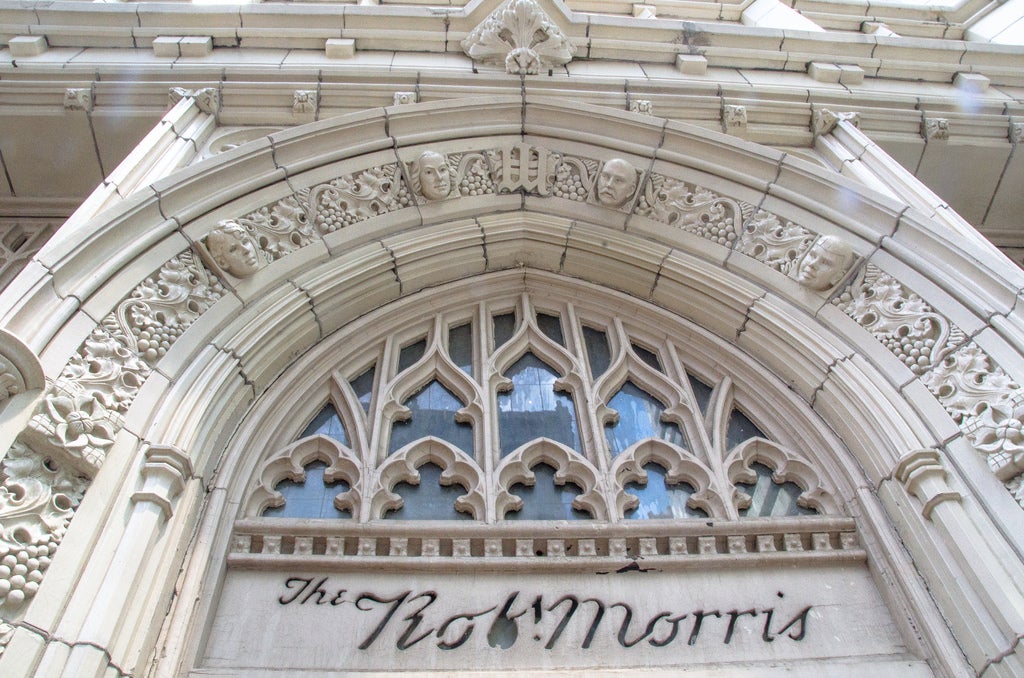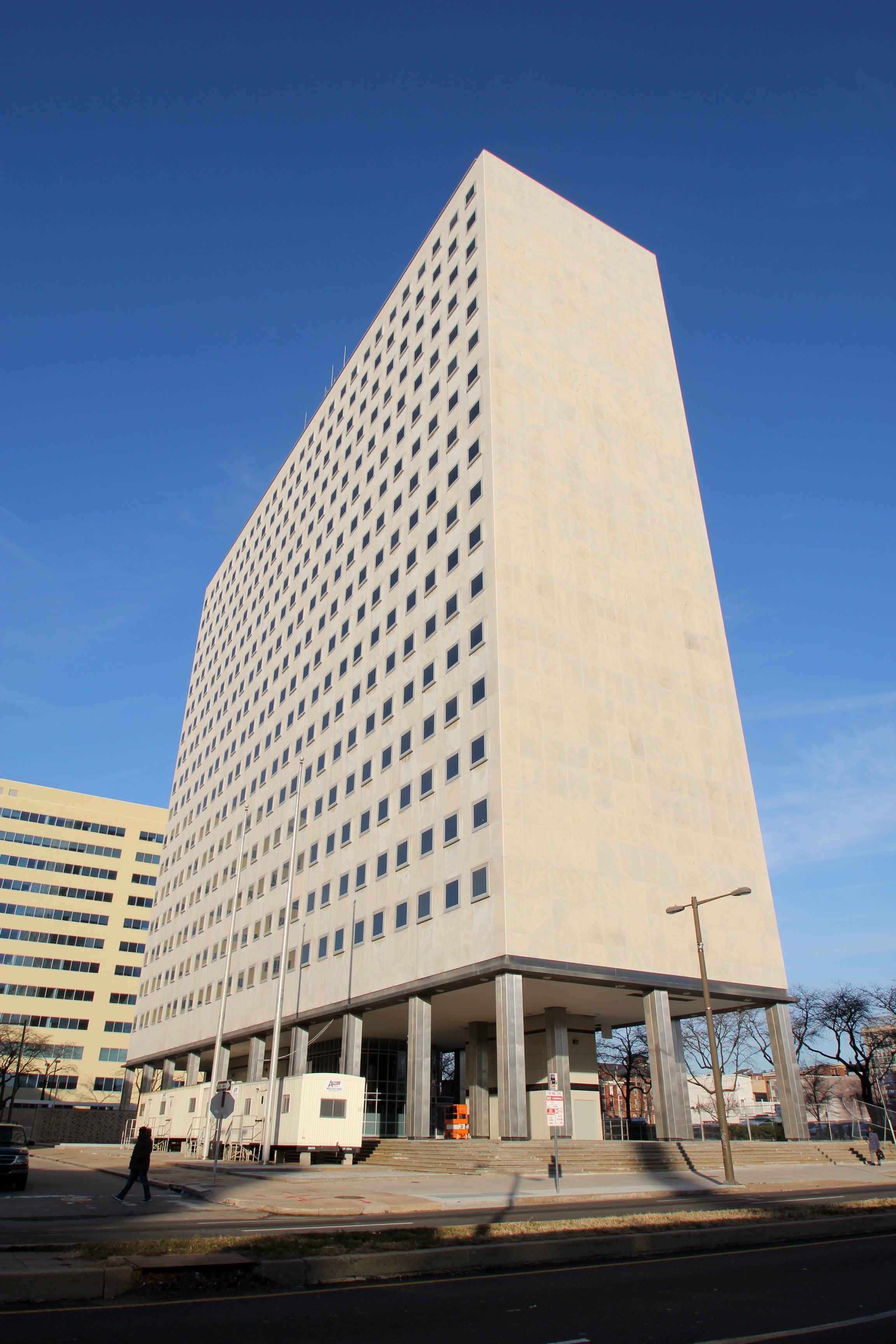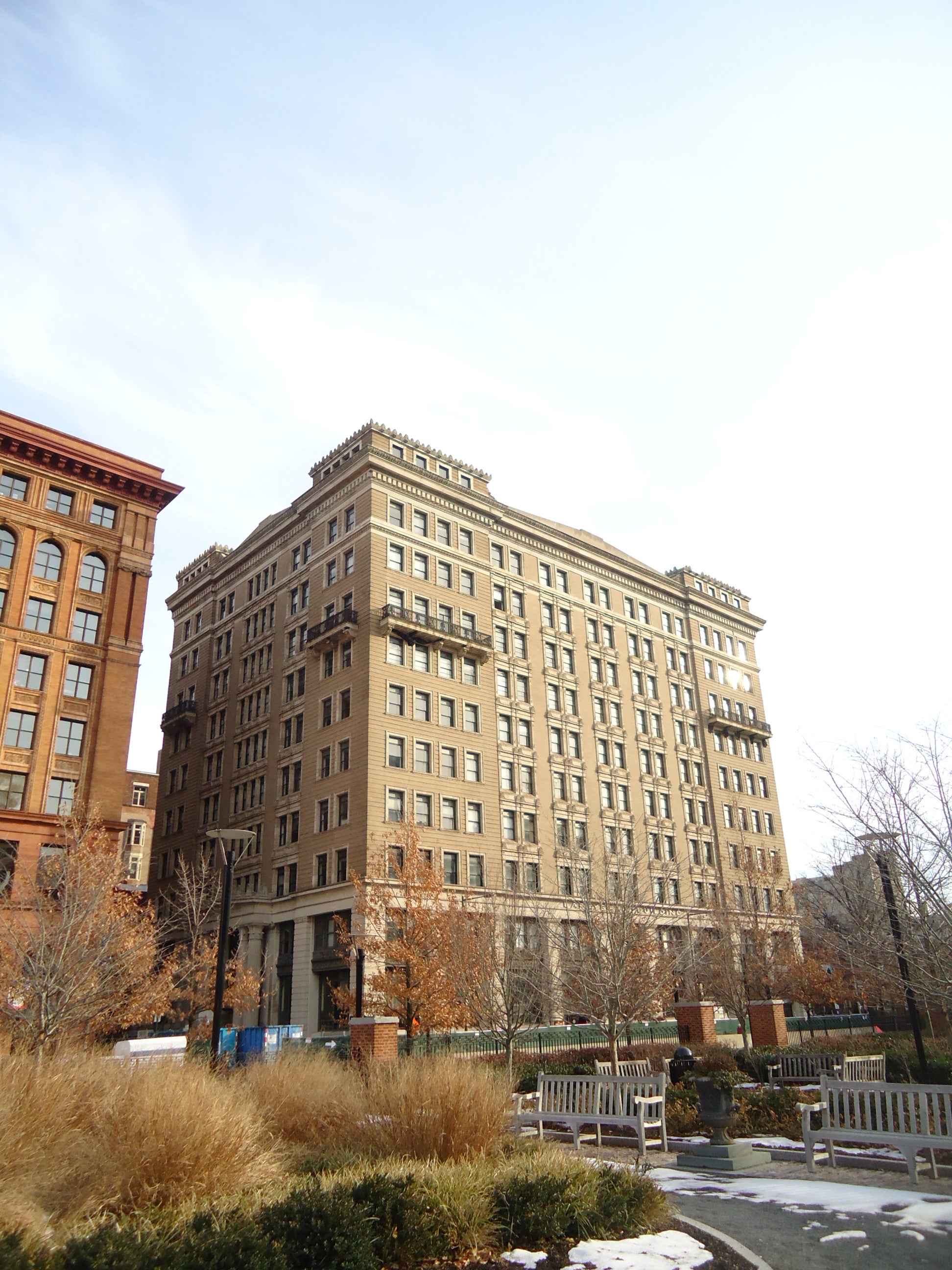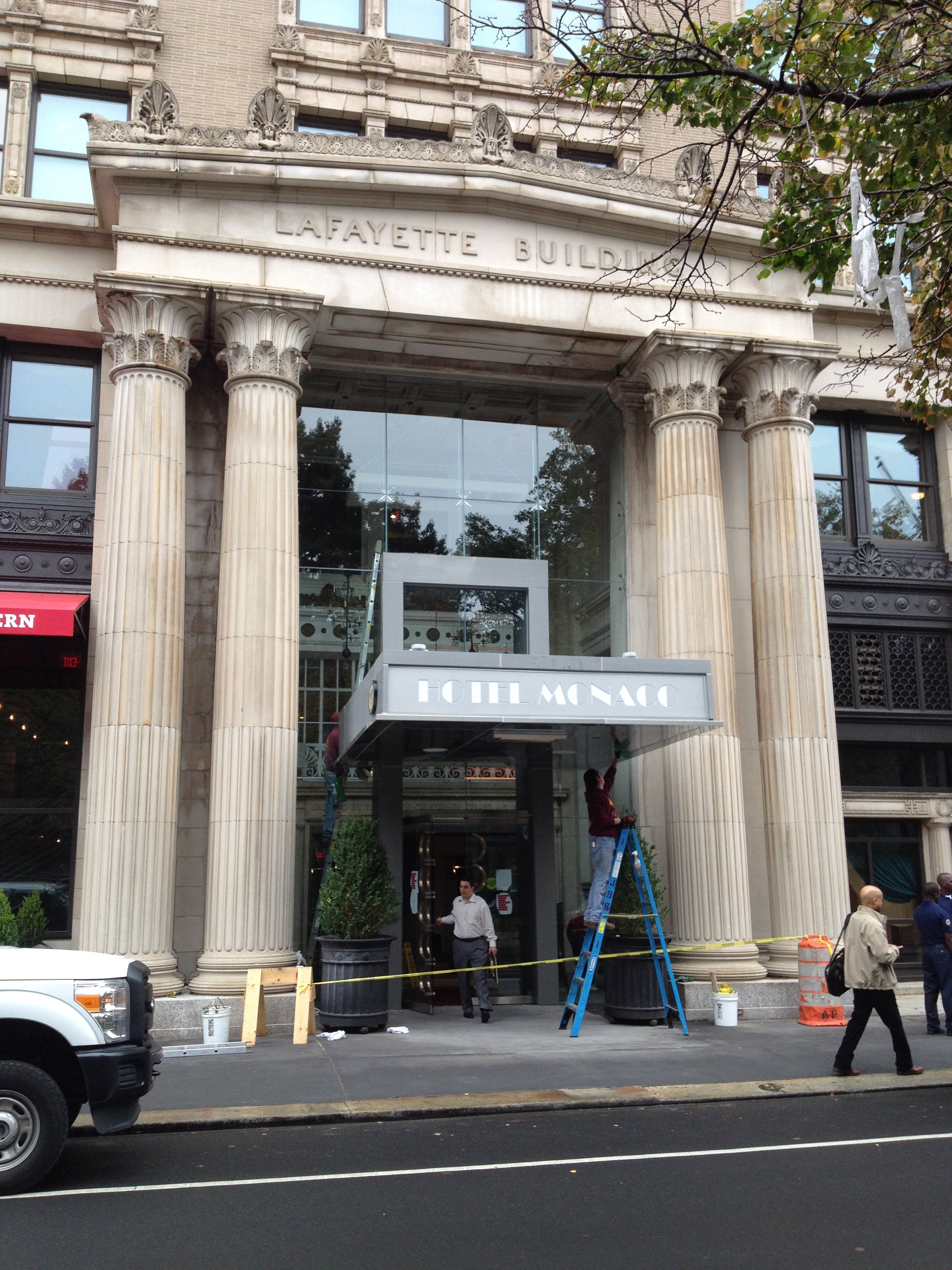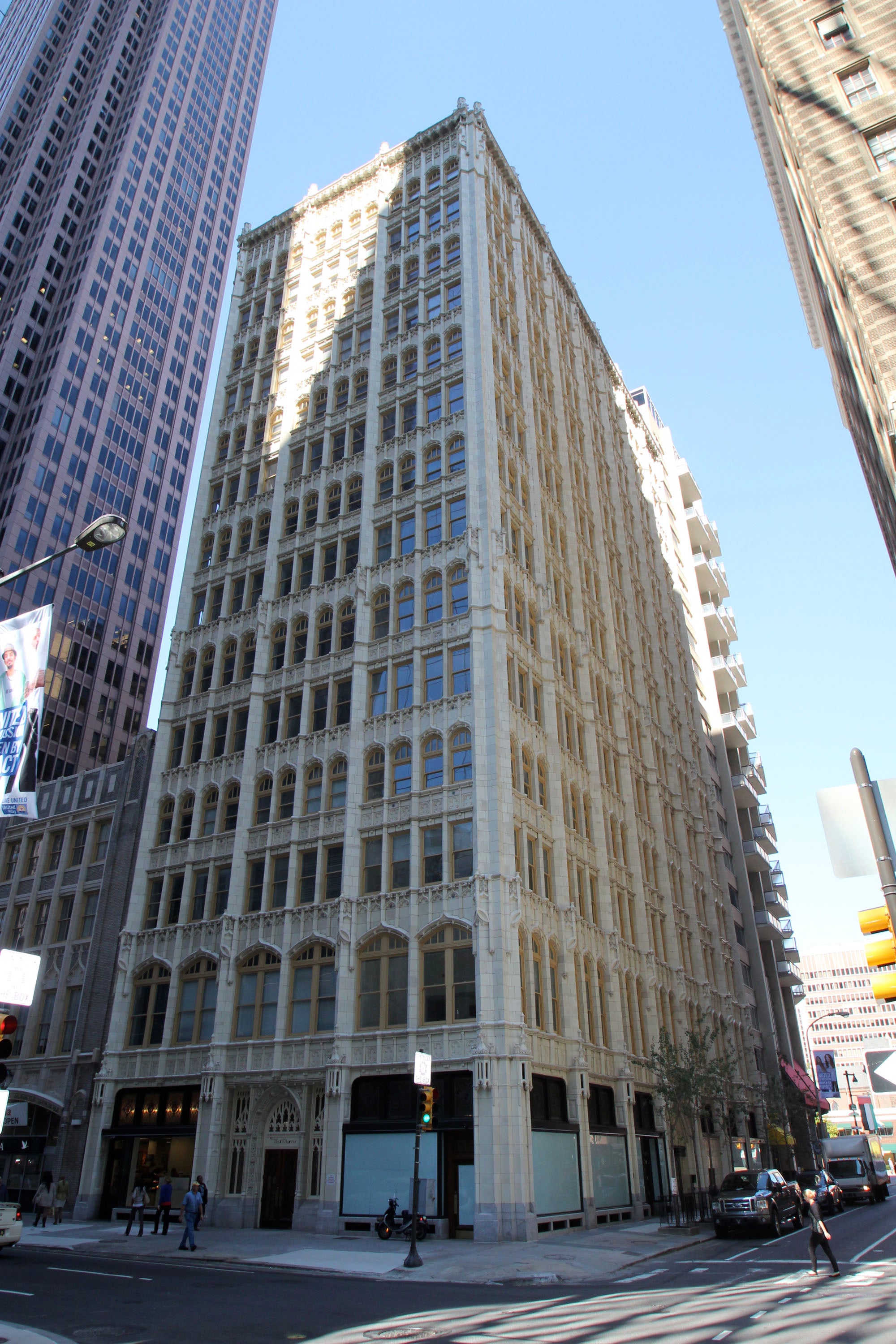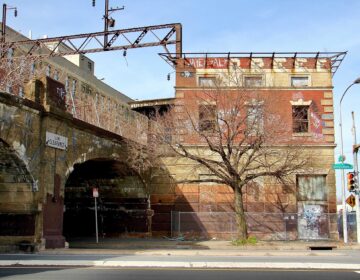Historic neighborhood
The transformation of the Lafayette Building, 5th and Chestnut Streets, into the Kimpton Hotel Monaco was “a great introduction of new life to the Washington Square neighborhood,” explained Patrick Hauck, director of the Neighborhood Preservation Program at the Preservation Alliance. “The interior has been changed, but the exterior is beautifully restored. This is a great example of how a historic building can be reused to enliven an important public space.”
The 11-story Lafayette, named for the preservation-minded Revolutionary War hero General Marquis de Lafayette, was one of the few office buildings in the Independence Mall area when it went up in 1907. Plans to convert the building into condominiums fell through, and the Lafayette sat vacant for several years before the Kimpton company considered the property.
Jack Paruta, of Gensler Architects, led the Hotel Monaco project.
“This was a pivotal project for our client,” Paruta said, “and it was such a key location. Kimpton had previously renovated the Architects Building [at 17th and Sansom] into the Palomar, and they were open to the idea of another property in Philly. Two hotels are better than one for them, and the market was right for this project. The location was more than optimal, with its proximity to the historic district,” Paruta said. “Kimpton liked the historical significance of the building and the chance to improve its presence in Philadelphia.”
There were a variety of challenges at the Lafayette, including the condition of the building after three years sitting fallow. “It had been very neglected. The interior and exterior were in fairly poor condition, so making the assessment was very key,” Paruta said.
Applying for federal tax credits provided financial benefits, but also raised challenges. “The downside is some of the limitations to what you can do to the building,” he continued. “We had to be very sensitive in everything we did. We had to follow the federal standards for rehabilitation, and we were under the jurisdiction of the Philadelphia Historical Commission” because of the building’s historic designation.
Gensler had to pay attention to any material that was removed, what historic fabric had to remain and be preserved, any details that were replaced or altered, color schemes, entrances, signage, storefronts, and “anything with regards to putting things on the roof,” Paruta said.
The electrical and plumbing systems had been previously removed from the building, so major equipment had to be installed on the roof. “The sightlines had to be considered throughout the project because it is in such a prominent location. The equipment on the roof couldn’t be too conspicuous or dominate the appearance of the building,” Paruta said. “We also put a rooftop bar on top and a large outdoor terrace. Instead of building up, we removed a portion of the roof and almost built down to keep the presence of this thing as inconspicuous as possible.”
An unexpected challenge arose on the street level as well. The sidewalks surrounding the building sat over the basement. And the structure below the sidewalk, “unbeknownst to us, had deteriorated past the point of being able to save it,” Paruta said. Gensler had to replace the old structure with new steel and decking and new concrete sidewalks.
The entire project took two years, “from due diligence to opening,” he said.
The cost: $50 million.
But the historic tax credits totaled about $10 million. “That made the project financially feasible. With a project of this size, without credits, maybe it doesn’t happen,” Paruta said.
The hotel also received LEED Gold rating, though “the rating system, we found, plays no favorites for doing historic building renovations. The constraints don’t lend themselves to the fact that we’re reusing an existing building. We were very ambitious with efforts to reduce water and power usage and many other aspects with regard to LEED rating. Adaptive reuse is a very sustainable practice, but it doesn’t translate so much in the LEED rating system – at least not yet,” Paruta said.
In any case, there were no regrets.
“The building was dying, and Kimpton was very ambitious in its development goals. It was looking for this kind of historic building stock. This kind of project is a win-win for them, and for the cities where these buildings reside.”
